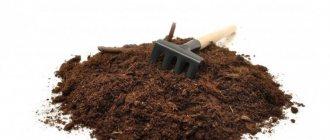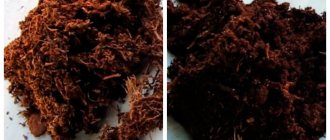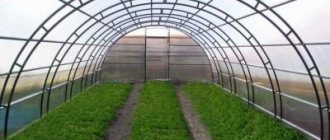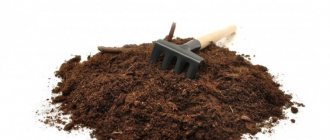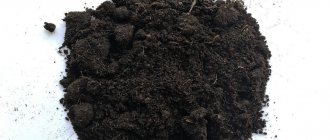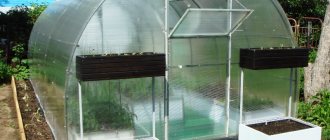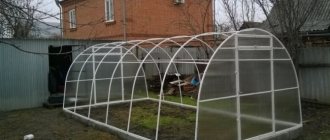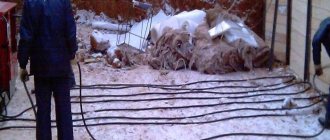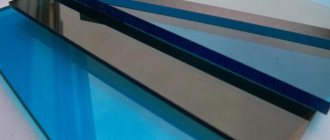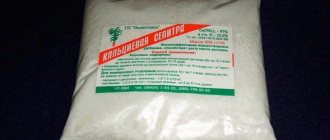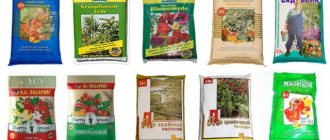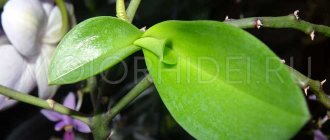Peat is a natural fertilizer that cannot spoil the earth. How to choose the right peat for your plot, how useful is adding peat to the soil for plants, which peat is better, high peat or low peat for the garden, how can you get peat for free? Today we will answer these questions and help you choose the ideal fertilizer option for your site.
Peat for the garden.
The benefits and harms of peat for the soil in the garden
Peat is the result of decomposition of plant residues under high humidity and lack of oxygen. Under natural conditions, peat can form in swamps. It is beneficial for plants, but in certain quantities.
Peat has a fibrous structure. Due to this, soil aeration improves and moisture penetration to the roots increases. Therefore, adding peat to the soil where plants develop is beneficial for them.
Peat contains useful substances necessary for plant development: nitrogen, potassium, magnesium, calcium, iron, humic acids and other elements. When it is applied, the soil is fed with these substances.
Significant advantages of peat applied as fertilizer:
- Peat can be applied at any time of the year.
- Peat cannot spoil the soil if you add it in large quantities.
Your garden plot can be completely transformed by adding peat to the soil.
Is peat a fertilizer?
Of course, peat serves as a good fertilizer, especially for “poor” soils. But it doesn’t make sense to add it in large quantities. Peat has a good effect on the structure of the soil, making it light, air and moisture permeable. But the beneficial substances contained in peat are not fully absorbed by plants.
It is recommended to add lowland and transitional peat to the soil, using it together with other organic and mineral fertilizers. Peat is useful to add to compost. Mulching is carried out using high-moor peat.
Seedlings in peat pots
For seedlings I use fertilizer neutralized with lime. You can also buy special tablets and briquettes. The tablets use compressed peat enriched with microelements. For small seedlings, tablets with a diameter of 2 cm are used, for large seedlings - 7 cm. Tablets are also used for rooting cuttings.
In order for seedlings to develop successfully, the organic material must not be allowed to dry out. If there is insufficient moisture, the peat tablets shrink and the root system dries out.
The main advantage of peat tablets is their versatility. You can grow any seedlings in them, since the acidity is neutral. The advantage of growing in tablets is significant - seedlings can be placed in the ground along with tablets without damaging the delicate root system.
The tablets provide breathability, so the roots do not lack oxygen. Organic material can be used for a long time, since it is not subject to rotting and is not a comfortable environment for the development of bacteria.
The lack of nutrients in peat also does not affect the well-being of seedlings, since any necessary fertilizer can be added to the tablets.
Types, composition of peat, use of peat as fertilizer in the garden
According to its type, peat is divided into high-moor, low-lying and transitional. Each type has its own composition, properties and features of use in the garden. The question of which peat is better, highland or lowland, for the garden depends on the overall harvest.
High peat has an acidic environment. Low and transitional - neutral or slightly acidic. Accordingly, high-moor peat refers to acidic peat. Low and transitional - to neutral.
Typically, plants prefer a neutral reaction of the environment and lowland and transitional peat are better suited for fertilizing them. But some prefer acidic soil. High-moor peat is suitable for them.
Horse
In the upper part of the peat layers, high-moor peat is formed from the remains of plants located on the surface. It is also called sphagnum because it contains sphagnum moss that grows on the surface of peat bogs.
High peat has an acidic reaction: from 2.6 to 3.2 pH. High-moor peat takes water from the atmosphere. It takes a long time to decompose and contains few useful elements. But it is valuable as a filter: durable and effective.
Well suited as a component for soil in a greenhouse.
Lowland
In the lower parts of peat bogs, a layer of peat is formed, which is called lowland. It gets its water from groundwater.
Low-lying peat has a neutral or slightly acidic reaction: from 5.5 to 7 pH. It contains many organic substances and almost all the beneficial elements needed by plants. Lowland peat perfectly enriches any poor soils and improves their structure.
When exposed to air, lowland peat tends to dry out. This leads to the loss of organic components and beneficial elements. Therefore, it must be carefully embedded in the soil.
Transitional: 2 in 1
The middle layer between high-moor and low-lying peat is usually called transitional. It has both the properties of high soil and low soil, but in smaller quantities.
The reaction of the environment in transitional peat is slightly acidic or neutral. It contains many useful substances and microelements, but less than in low-lying soil. Decomposition is not very active. Transitional soil contains a lot of organic matter, but not enough potassium.
Used as an additive to compost. Can serve as bedding for animals.
Sour
High-moor peat has an acidic reaction and is classified as acidic peat. It can be added to planting holes of plants that prefer acidic soil.
Some plants grow well only in acidic soils. Adding high peat to the soil is an ideal feeding for them.
During the development of such plants, the soil under them is periodically mulched with high-moor peat. As a result, the plants feel great. We are talking about such pampered plants as:
- blueberry;
- hydrangea;
- cranberry;
- Erika;
- heather and others.
For most plants that prefer a neutral reaction of the environment, high-moor peat can be added as part of compost.
Neutral
Neutral peats include lowland and transitional peats, since their environmental reaction is close to neutral. They can be safely added to plant soil without fear of acidification.
Neutral peat improves the structure of the soil, making it light and porous. Well retains moisture and useful elements inside the soil.
This type of peat is suitable for application to vegetable plantings and berry fields.
What is better - high-moor or low-lying peat?
Lowland peat is used to improve the structure of the soil and enrich it with useful substances and microelements. As part of compost, which includes other organic and mineral fertilizers, lowland peat will be an ideal additive for plants. Receiving such feeding, trees, shrubs and flowers fully develop in all their glory and delight the gardener with a good harvest and ideal decorative properties.
High-moor peat is good to use to create a mulch layer. With this care, the soil under the plants does not dry out, and at the same time its structure improves. Plants feel comfortable, yield increases, and the appearance of flowering plants improves.
Thus, whether high peat or low peat is better for you will depend on the goals you are pursuing.
Application
Acidic peat is used to enrich the soil with humus and to improve its mechanical properties, for growing seedlings. Sphagnum fertilizer is also widely used as a covering material for mulching. However, farmers do not recommend structuring fertile soils with high-moor peat, since this makes no sense. Peat is not added in its natural form to depleted and infertile soils, only together with other organic additives.
Characteristics of sphagnum fertilizer:
- high absorption capacity;
- porous structure;
- breathability;
- absence of weed seeds;
- phytosanitary properties.
The soil mixture, which contains peat, prevents the proliferation of late blight and pathogens. The peat substrate creates comfortable conditions for the development of cultivated seedlings.
Organic material packaged in briquettes is first fluffed up and left in this form for a couple of weeks. Then it must be sifted through a sieve with the required mesh size to obtain the required fraction size. Afterwards, this material is moistened so that it swells, and containers for plants are filled with it. Properly prepared material fits well into pots and cassettes, providing a convenient environment for the growth of seedlings.
Note! The acidity of peat is quite high, so it is recommended to use it only for plants that prefer an acidic environment.
If you decide to use sphagnum fertilizer for other plants, you need to apply liming to lower the acidity level. The optimal acidity level should not exceed 5 pH, since hard water tends to increase soil acidity.
Peat does not lose its quality for three years; in the future, replacement is required. As it decomposes, its basic properties deteriorate, so the soil is enriched with sawdust, manure including straw, sand or fresh peat. To reduce the rate of decomposition of organic matter, dust from pine bark (1% by weight) is added to the soil. Spent peat substrate can be used as fertilizer.
Liming
Acidity can be neutralized by gradually adding lime, ground chalk, dolomite and limestone flour. After thoroughly mixing the ingredients, the mixture is moistened. After a week, check the acidity level using a water extract.
To correctly calculate the amount of lime, you need to take into account the degree of its grinding and humidity level. The finer the lime is ground, the less amount is needed to add to the peat. The wetter the lime, the more it is added for liming.
The moisture content of the peat itself is also taken into account. A moderately moist substrate requires a small amount of calcareous material, dry organic matter requires a larger amount of lime or chalk.
To deoxidize 1 m3 of high-moor peat, it is necessary to add up to 8 kg of limestone flour. If you use chalk, its weight will be about 5 kg. After deoxidation, the peat is enriched with fertilizers; the addition of microelements is also required during the growing season of seedlings.
Although lime deoxidizes peat, it has a harmful effect on plants. Therefore, ash is used instead: 0.5 kg of wood ash is used for 30 kg of peat. Ash not only deoxidizes the peat mixture, but also enriches it with microelements - potassium and phosphorus. These substances are in a form accessible for absorption by plants.
Fertilizers for acid peat:
- superphosphate;
- ammonium nitrate;
- potassium sulfate;
- magnesium sulfate;
- iron sulfate;
- manganese sulfate;
- copper sulfate;
- manganese sulfate;
- boric acid;
- others.
Fertilizer application depends on the needs of the seedlings. If you add macrofertilizers, they are applied in dry form. Microfertilizers are added in solutions.
Composting peat
Peat compost is used as an alternative to manure fertilizer. It is mixed with plant waste and other organic elements. The time for preparing composts is with the onset of spring warmth and until mid-autumn. If you use weeds, you need to mow them before seeds form. Fallen leaves and kitchen waste (cabbage leaves, beet tops, etc.) are used.
The roots of perennial weeds and inorganic waste are not suitable for compost.
You need to form a compost heap in a shaded area of the yard, since under the directed rays of the sun it will dry out quickly. First, prepare a place for the heap - remove a layer of soil 30 cm deep and fill the resulting hole with peat. Then a layer of plant material is laid and covered again with peat (the height of the layers is approximately 20 cm).
Each layer of organic matter is alternated with peat, laying a pile no more than 1.5 m high. To increase the nutritional properties, bird droppings or manure are added to the compost. To reduce acidity, add ground lime or ground old lime whitewash to the compost (3% of the total mass).
Note! If the compost heap exceeds 1.5 m in height, the waste-processing bacteria in it will die.
It is necessary to constantly monitor the level of moisture in the compost, preventing it from drying out. The pile is regularly irrigated with a hose to achieve optimal moisture. Instead of pure water, you can use diluted chicken/animal manure. To maintain moisture, the pile is covered with cellophane film.
During the ripening period, the pile is not only regularly moistened, but also mixed. This will provide an influx of oxygen for bacteria processing organic matter.
How long does it take for compost to mature? It depends on the composition of the organic matter. It can ripen in 4 months and a couple of years. The readiness of compost is determined by its crumbly state: it is a homogeneous mass of dark color with the aroma of earth.
Where can I get peat for a garden in nature for free?
In wetlands, you can extract peat yourself without spending money on buying it. To do this, you need a sharpened shovel and a vehicle with a trailer.
First you need to remove the top layer of a few centimeters with a shovel. Then you can start loading the peat into the trailer. After delivery to the site, the peat must be dried and then used as fertilizer.
Peat extraction.
How to measure current soil acidity
There are three main ways to determine soil pH:
- Visual – what weeds grow on the site. Horse sorrel, horsetail, plantain, fireweed, heather, mosses and sedge are found on acidic soils. For alkaline ones - field mustard, larkspur, wild poppy. But coltsfoot, sow thistle, field bindweed, cornflower and chamomile prefer neutral soils.
- Litmus paper test - prepare a solution at the rate of one part earth to five parts rain or distilled water. The indicator is immersed in it. The resulting color of litmus paper is compared with the scale given on the packaging.
- Using a device - a pH meter, which shows the level of acidity when the probes of the device come into contact with soil.
Acidity is measured with a pH meter in several places in the area, then the average value is determined
What equipment is needed to produce fertilizers from peat?
To organize the production of liquid humic fertilizers, it is enough to purchase a ready-made set of equipment. On the market you can find BUG units of different capacities. Such a mini-factory can be located in a small room. Or it can work on the street.
You can set up a plant of this type yourself by assembling a unit from simple elements:
- large containers of approximately 3 cubic liters or more;
- heating heating elements and valves for them;
- electric motors.
With proper organization of work, a mini-plant for the production of liquid humic fertilizers can pay for itself in a few months.
How is peat processed into fertilizer?
Peat is processed using a bioactivator - a closed container with an internal environment without oxygen. Bioactivators have valves through which excess methane is released. This gas is formed when peat rots. To make the rotting process faster, heating elements - heating elements - are attached to the containers.
The decay of the biological mass lasts 2–3 weeks, after which the finished fertilizer can be poured into containers.
Production of organomineral fertilizers based on peat
Fertilizers are prepared from peat, which are sold in stores:
- In the form of granules. The granules are prepared using organic and mineral ingredients. During the production of granules, the nutrients from peat become easily absorbed by plants. At the same time, they do not dissolve immediately, but gradually. As a result, plants are nourished, after adding granules to the holes during planting, throughout the entire growing season.
- Humus in liquid form. Peat-based humic fertilizers are easily absorbed by plants. They are enriched with organic matter and can be used for foliar feeding. Humus can be used to stimulate plant growth by soaking seeds in it.
Technology for the production of humic fertilizers from peat
The production of humic fertilizers from peat proceeds in several stages:
- First, the peat is cleaned of excess inclusions that can impair the quality of the fertilizer.
- The peat is crushed.
- Placed in special containers with high pressure and temperature.
- The finished product is purified using a supersonic homogenizer.
- The mixture is placed in a centrifuge to separate by density.
With this type of processing, liquid fertilizer and dry fertilizer are obtained, which can be diluted with water.
How to choose and use it correctly?
High-moor peat has become widespread when growing flowers and vegetables in closed conditions (in greenhouses, hotbeds, etc.) . A distinctive feature of summer peat is its impeccable level of breathability, lightness, and the absence of toxic elements dangerous to plants. During long-term storage, the total amount of nutrients may decrease.
Experts strongly recommend storing the composition in special packaging.
Note! The pressed form of the substrate does not allow air to fully penetrate, which eliminates the occurrence of any chemical oxidation reactions.
For a specific type of plant, your own fractional substrate is selected. The value of air permeability depends on the size of the fractions themselves.
Before using the material, it must be carefully fluffed and kept in this state for 2 weeks. Experts recommend sifting the substrate through a metal mesh, the cells of which correspond to the size of the fraction itself . Fluffed acidic peat is kept at a temperature of 17 to 20 degrees, constantly watering it.
Properly prepared material is laid down in a thin and as even layer as possible, and it is placed in specialized containers (pots or special cassettes), thanks to which the process of caring for young seedlings is greatly simplified and oxygen access to the root system is ensured. The most popular is sphagnum peat, due to its special moisture capacity and porous structure.
In some cases, peat substrate is obtained with perlite inclusions. This composition provides an optimal level of water-air regime for the root system of the plant. The cost of the finished product increases as the percentage of perlite increases.
High peat is characterized by high acidity . It is used for planting plant crops that primarily require an acidic environment that can ensure full development and growth (relevant for heather, rhododendrons, azaleas, etc.). The substrate can also acquire a neutral acidity value; this requires liming. Peat is deacidified to a pH level of 5.0, since additional alkalization may occur when watering plants with relatively hard water.
Reviews about manufacturers
There are now increased demands on fertilizers, since products grown on your own plot must be healthy. Every gardener wants to be sure that peat will not bring elements harmful to health onto his plot.
People are looking for high-quality peat fertilizers in order to have not only a large, but also healthy harvest. Conscientious manufacturers try to fully comply with such requirements.
Peat "Buyskie fertilizers"
The Bui fertilizer plant pays great attention to the quality of its products. Its products are very popular among the population. Here are gardeners' reviews of the peat produced at this plant.
Svetlana Nenarokova, Irkutsk
I was able to attend a conference organized by the management of the Bui fertilizer plant. I was convinced that the plant's managers were concerned that only products of excellent quality would be produced.
I saw with what love the workers talk about their business, with what respect they treat their enterprise. When you see such an attitude, you rejoice and understand how valuable it is. I fertilize my dacha plot exclusively with Buyskie Fertilizers peat.
Maria Nikolaevna, Tobolsk
I tried peat produced by the Buysky plant on my plot and fell in love with it with all my heart. This is the best substrate that I have ever bought: homogeneous in composition, without unnecessary impurities and inclusions. I only buy this now.
Tomatoes and cucumbers grow very well. Last year I added peat to potato plantings (peat is a very good fertilizer for plants).
My dacha is blooming, and the whole garden is responding with a wonderful harvest. Thanks to the manufacturers!
Coco peat "Aurica Gardens"
Recently, coco peat has become increasingly popular. Coconut peat is made from the husks of ripe coconuts. The peel undergoes special processing and turns into peat. This soil is sold in pressed briquettes. After getting wet, it takes on a standard appearance and increases significantly in volume.
Domestic gardeners call palm substance peat; in Western countries it is classified as a complete fertilizer.
The advantage of coconut peat is that it is a natural ecological material without impurities or foreign inclusions.
Nikolay Petrin, Penza
I have a small plot of land. I recently discovered such a wonderful peat as coconut peat from. At first I started adding it as fertilizer to flowers. I got an excellent result. I have a lot of flowers, and everyone liked the coco peat, especially the lilies.
Now I add coco peat to all plantings in the garden and garden. I grow tomato seedlings on it. I consider Aurika Gardens to be the best company producing coconut peat.
Tired traveler, Ulyanovsk
I do a lot of flower breeding (including for sale). I consider the most successful coconut peat from Aurika Gardens. You can get good results with it. The product quality is consistently high.
What is peat and scope of application
Peat refers to sedimentary rocks that form under certain conditions. Particles of plants, moss and other organic matter undergo several stages of decomposition with a limited supply of oxygen and high humidity. Peat layers can be found in swampy areas, near bodies of water with running water, etc. Such deposits are called peat bogs. Most of all fossil deposits are located at Russian latitudes.
Peat has many areas of application. The main ones are fertilizing garden plots, greenhouse soil, mulching the soil, as well as using the material as fuel for heating and hot water supply.
The main area of application of peat is fertilization of garden plots
Peat mulch promotes good heating of the soil, which allows you to preserve crops in the autumn, early spring and during winter sowing of some garden crops. A layer of 2-5 cm helps retain moisture in the soil and prevent young seedlings from drying out.
Peat tablets are made from natural material, which are then used to grow seedlings. The top layer of raw materials is suitable for this. It is further improved with microelements and a growth stimulant is added.
Peat makes excellent bedding for livestock and birds. It has antiseptic properties and can protect animals from winter illnesses. The disadvantage of using peat for such purposes is the high cost of raw materials due to the high cost of its processing processes.
